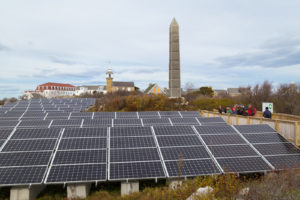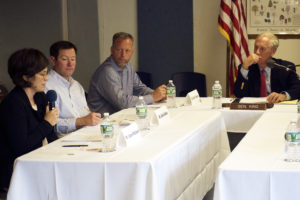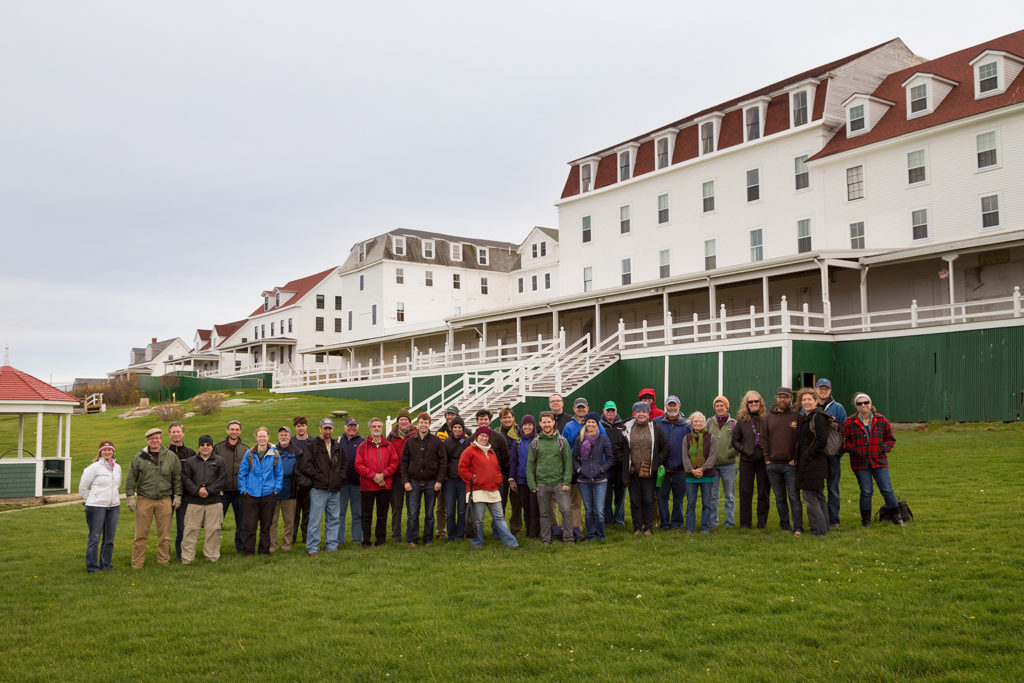Energy can be expensive and unreliable for island communities everywhere. Through our work over the last decade and our collaborations with communities in Maine, New England, and across the globe, we’ve learned that by bringing the right ideas and partners to the table we can help address the very real needs and common challenges we all share. Building on this history, we’re now gearing up to help remote coastal communities make their energy systems cleaner, more reliable, and more cost-effective through a new partnership with the National Renewable Energy Laboratory (NREL) and the U.S. Department of Energy (DOE).
As we shared in November 2020, this collaboration, the Energy Transitions Initiative Partnership Project (ETIPP), will bring top expertise to support several Maine island communities with their energy challenges over the next few years.
Here are three takeaways from our collaboration with communities, partners, and Maine’s Congressional delegation, which helped to shape this federal program to meet the practical needs of island communities, and what all of this means for our continued work here in Maine and beyond.
Believe in the opportunity of collaborative work and take risks
Find like-minded thinkers—from across geographies and/or sectors—and find the common ground. You will almost certainly unlock value, even if you can’t see it at the outset.
For nearly a decade, the Island Institute’s Island Energy Conference and the Islanded Grid Resource Center (IGRC) helped to form a hub for island community leaders in New England and beyond to connect with each other and those who could support their work. In coming together for the conference and on various exchange trips, participants found a way to get real about their successes and challenges and became invested in each other’s stories—from Alaska, to Denmark, to the Isles of Shoals and beyond. A strong sense of camaraderie and trust emerged.

In connecting communities across a broad geography, we saw the flash of understanding and openness to new solutions that comes from talking to a leader from another community and thinking: yeah, they get it, they understand what we are going through, maybe they can help us figure this out. Policymakers and participants from the clean energy industry also got an important insight into what it really takes to find success with island projects. Some of the best aha moments happened when islanders visited other communities and saw what was possible.
Without an intentionally designed network to foster these connections between communities working through similar challenges, the barriers created by distance or between sectors makes learning from each other significantly harder and less likely to occur.
As we saw these connections become more and more critical to our work, the challenge became how to hardwire these opportunities for shared learning and island-relevant support into federal policy making. With funding for the IGRC winding down, we found that there were limited federal resources available that resonated with small islands on clean energy issues. So, we set out to bolster what was there—the Energy Transitions Initiative at the U.S. Department of Energy (DOE)—to ensure that it was responsive to the needs of Maine island communities as they rolled up their sleeves to tackle transformational energy projects.
help bridge gaps and Bring the right partners to the table
Ideas can come at the right time and land in the right place, but they only gain real traction when they stand on a strong track record and bring the right partners to the table.
Through years of work supporting islands in New England and learning about experiences in Alaska and Hawaii, we regularly saw a gap between the support island and remote communities needed and the ability of federal partners and others to effectively resource these needs. Where there was a bridging organization to help close this gap, the resources were more helpful. We began to test out this idea, saw it resonate, and worked to amplify the message with key audiences:
- In early 2017, we brought an ask to the Maine Congressional delegation: “Let’s try to improve the way the federal government supports island and remote

Island Institute Chief Community Development Officer Suzanne MacDonald testifies at a U.S. Senate Environmental and Natural Resources Committee field hearing in 2017. communities.” Based on the track record that Maine islands were building on clean energy issues, there was a shared interest to use Appropriations committee report language, a strategy to ensure that federal agencies are using funds provided by Congress in the most impactful ways.
- In fall 2017, Chief Community Development Officer Suzanne MacDonald testified at a U.S. Senate Environmental and Natural Resources Committee field hearing hosted by Senator Angus King about the energy challenges facing island and remote communities in Maine, making the case to Congress more broadly.
- Through regular calls and multiple trips to Washington D.C., we leveraged our relationships with partners in Alaska and Hawaii who had similar experiences and were highly motivated to bring the same message to their delegation, creating a powerful political geography for this issue. With Senator Susan Collins, Senator King, Senator Murkowski (Alaska), and Senator Hirono (Hawaii) interested in bringing greater value to their island constituents, we had strong representation on the two Senate committees that would be relevant: Environment and Natural Resources and Appropriations. This group worked hard, across party lines and with their colleagues in our respective House delegations, to ensure committee report language reflected the lessons learned from these communities.
We patiently watched this move through DOE and NREL into implementation, with technical assistance scheduled to kick off in May 2021. Through persistence and collaboration, we worked with partners to keep the focus on building a program that would be most helpful in meeting the on-the-ground needs of communities along our coast.
Stay focused on the real needs of communities
Grounding our work in the very real needs of communities, while also keeping an eye on the horizon, positions us to make these incredible connections and create opportunities for island communities in Maine and other parts of the U.S.
Ultimately, the ability to steer federal resources to meet the realities of island communities starts in those communities themselves. Years of deeply listening to and collaborating with islanders to find practical solutions to the complex challenges of keeping the lights on and buildings warm miles out to sea. Creating opportunities to detail what was working and what wasn’t, taking pages from each other’s playbooks, and sharing lessons on what it takes to get the job done.
The work of these islanders created important benefits at home—hundreds of residences weatherized; cleaner, more reliable power systems installed—while also serving as a powerful catalyst for systems-level change. In the end, we are tremendously proud of how some of our region’s very smallest communities inspired a change in how the federal government does its work.
As we wait for the ETIPP support to land in Maine communities, we are also excited to put these experiences and ideas to work as we continue to connect island communities to each other, including emerging efforts such as the Climate Strong Islands Network.
Time after time, we have seen that island communities everywhere have more in common than in difference: capacity is always an issue; strong leadership is essential; solutions have to be thought about in an integrated manner; and there is a “can’t fail” mentality that makes impossible projects happen because there is no alternative.
Sometimes, when the right set of ideas, partners, and community needs align, amazing things can happen.


